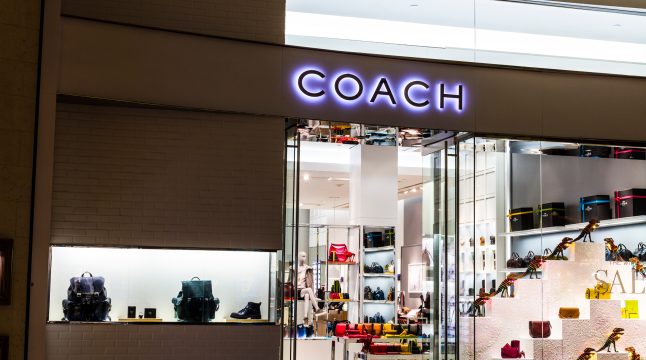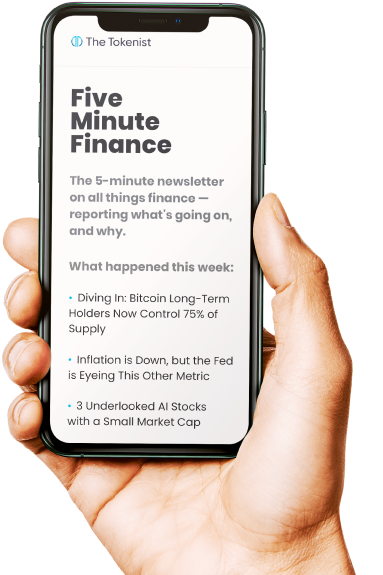
U.S. Luxury Brands May Outshine Europe After New Tariffs: 2 Strong Picks
It is no secret that Europe came out battered in last Thursday’s Framework on an Agreement on Reciprocal, Fair, and Balanced Trade. French Prime Minister François Bayrou described the agreement as a “dark day” and a moment of “submission”. This outcome, however, is no surprise to anyone who recognized the crippling weakness revealed by Brussels’ silence after the Nord Stream pipeline bombing.
For Europe’s luxury sector, the newly imposed 15% tariff on most goods threatens to reshape the landscape. Iconic houses such as Hermès, Chanel, and Louis Vuitton will now face price hikes to offset the new costs. This itself is problematic given shoppers’ price fatigue.
Earlier in the year, before the US-EU trade deal, McKinsey & Company calculated that the luxury market nearly tripled its profits from 2019 to 2024, but the bulk of that growth (~80%) came from price hikes. Into 2025 – 2027, the consulting firm forecasted the market’s CAGR of 4% to 6% for the US and 2% to 4% for Europe. In this light, is now the time to shift exposure toward U.S. luxury brands?
Ralph Lauren Corp. (NYSE: RL) ~18% potential upside
Although New York-based, Ralph Lauren has global reach appealing to both men and women with brands such as Polo and Chaps. The company has become synonymous with timeless style, reminiscent of elite English and American aristocratic lifestyles. In addition to clothing, the company also supplies footwear, home accessories, fragrances, and hospitality.
When looking at the company’s bottom line, it bears keeping in mind that the number of millionaires in the U.S. has nearly quadrupled since 2000, according to UBS’ Global Wealth Report 2025.
In early August, Ralph Lauren reported its earnings report ending June (fiscal Q1 2026), showing 14% year-over-year revenue increase to $1.7 billion. Interestingly, revenue growth from Europe was double that from the US, at 16% vs 8% quarterly increase respectively.
More importantly, the company increased its operating margin by 270 basis points from the year-ago quarter to 17%, delivering an operating income of $274 million. Ending the quarter with $2.3 billion in cash and $1.6 billion in total liabilities, Ralph Lauren raised the full-year outlook.
The company projects further 40-60 basis points operating margin improvement and revenue growth by 150 – 200 bps for full-year 2026. Ralph Lauren’s annual dividend is $3.65 per share.
Year-to-date, RL stock is up 28.53%, currently priced at $296.50 per share vs its 52-week average of $240.79. According to WSJ’s forecasting data, only one analyst is in the “sell” camp, with 12 being bullish. The average RL price target is now well above the present price level, at $350.15 per share. Even the most conservative outlook is above current levels, at $305 per share.
Join our Telegram group and never miss a breaking digital asset story.
Tapestry Inc. (NYSE: TPR) ~15% potential upside
Also based in New York, under the Tapestry umbrella are urban luxury brands Kate Spade and Coach. After buying shoe-focused Stuart Weitzman in 2015, in 2017, Coach acquired handbag and accessories company Kate Spade for $2.4 billion, greatly expanding its millennial reach.
In early August, Tapestry reported its fiscal Q4 2025 earnings ending June, showing record 8% year-over-year revenue growth to $1.7 billion. The Coach brand was the strongest performer, having generated 14% more revenue in the same period.
By targeting millennials and Gen Z, the company gained 60% more customers to 1.5 million. As is the case with Ralph Lauren, Europe contributed more to revenue growth than North America at 10% vs 8% respectively. The region of Greater China showed the most promise with 18% YoY growth.
This makes sense as China’s middle class has substantially increased, making up the world’s largest middle-class consumption market, according to the non-profit Brookings Institution. Of course, this means significant expansion of the upper-middle class as well.
For the quarter, Tapestry increased its gross margin by 140 bps, ending up with $1.12 billion in cash against net debt of $1.27 billion. Through stock buybacks, the company returned $2.3 billion to shareholders in fiscal 2025. On top of that, Tapestry increased its dividend payout by 14%, at the current annual dividend rate of $1.40 per share.
To further attract investors, the company announced a likely dividend increase to $1.60 per share in September.
Year-to-date, TPR stock is up 55.5%, presently priced at $102.11 per share. According to WSJ’s forecasting data, the average TPR price target is $117.25 against the 52-week average of $72.19 per share. The bottom outlook for TPR stock is now at $94, making Ralph Lauren still the better option.
Disclaimer: The author does not hold or have a position in any securities discussed in the article. All stock prices were quoted at the time of writing.




